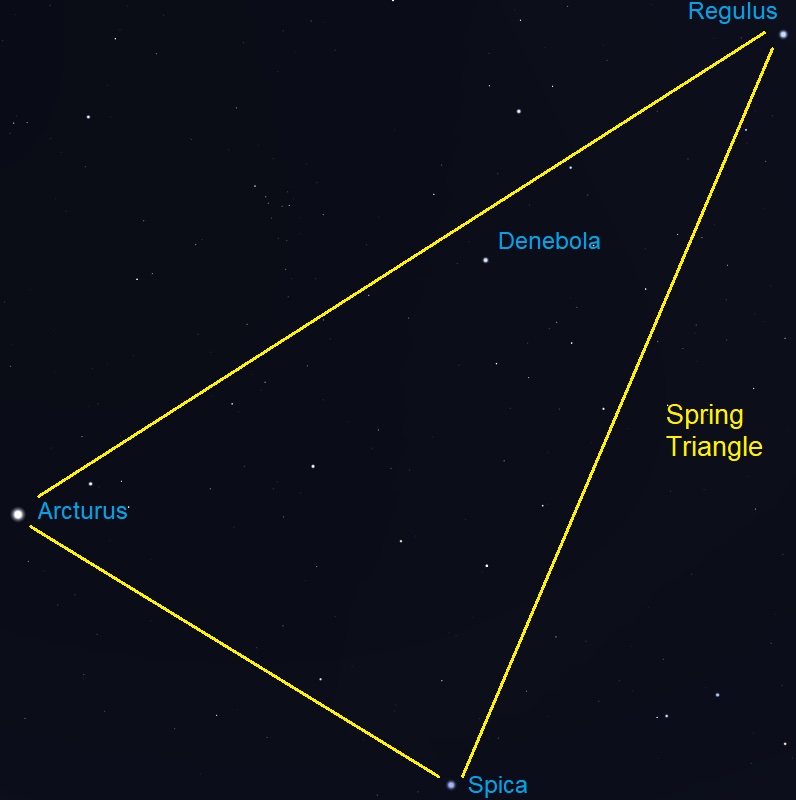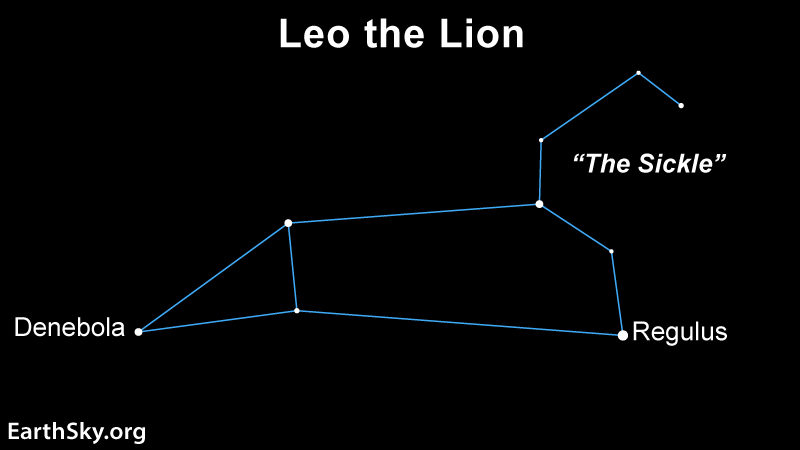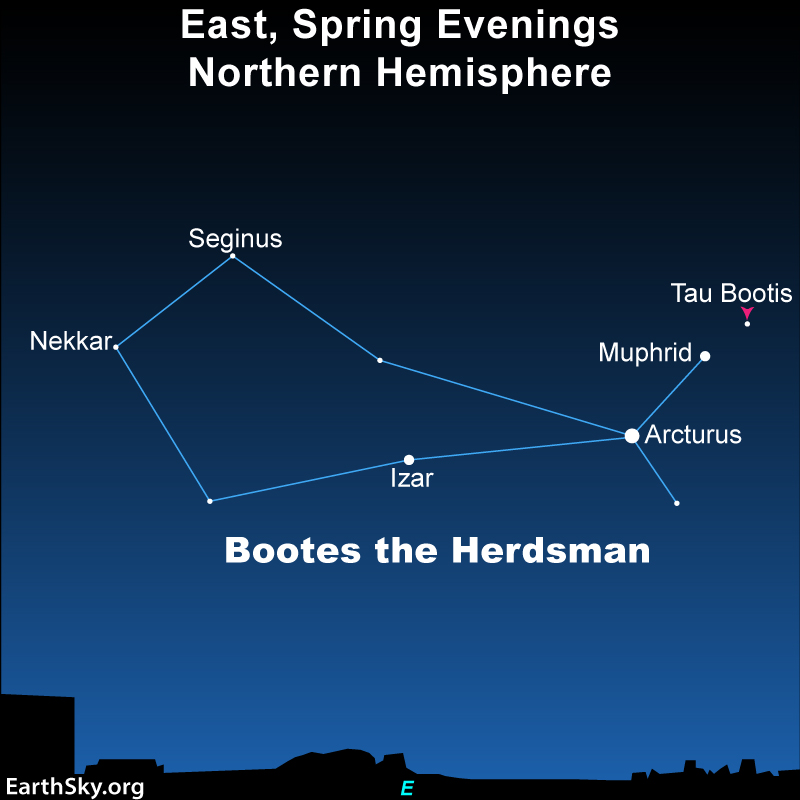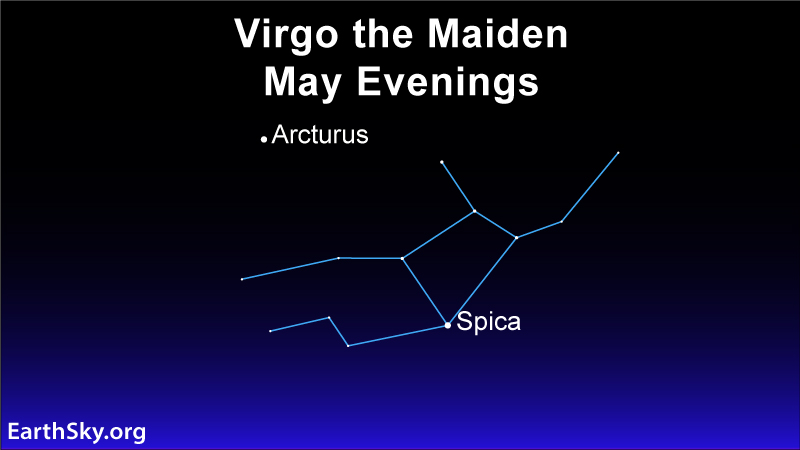What Is the Spring Triangle?
The Spring Triangle is a large, bright triangle of stars that becomes visible in the eastern sky during spring nights in the Northern Hemisphere. It’s not a constellation, but an asterism—a recognizable pattern made from stars belonging to different constellations. The triangle is formed by three famous stars: Arcturus, Spica, and Regulus.
Each of these stars comes from a different constellation. Arcturus is part of Boötes, Spica belongs to Virgo, and Regulus sits in Leo. These stars are among the brightest in the night sky and help skywatchers identify the arrival of spring. When the Spring Triangle rises in the east after sunset, it signals that winter is ending and warmer days are near.

How to Find the Spring Triangle at Night?
To spot the Spring Triangle in the east at night, look up after sunset during March through May. Begin by locating Arcturus, the brightest of the three, with its warm orange glow. It rises first, followed by Spica, a bluish-white star low in the southeast. Finally, look for Regulus, sitting to the right of the other two in the east.
Here’s a quick reference to identify the Spring Triangle stars:
| Star | Constellation | Color | Brightness (Apparent Mag.) |
|---|---|---|---|
| Arcturus | Boötes | Orange | -0.05 |
| Spica | Virgo | Blue-white | +1.0 |
| Regulus | Leo | Blue-white | +1.4 |
They form a tall, narrow triangle when viewed in the early evening sky. Use a star app or stargazing map to help trace the shape if you’re new to astronomy.
Why Is the Spring Triangle Important?
The Spring Triangle helps amateur stargazers navigate the spring night sky. It also marks a seasonal shift in the stars we see. In winter, bright constellations like Orion dominate. But in spring, constellations like Leo and Virgo become more visible. The triangle’s appearance is a visual cue that spring has arrived.
Ancient cultures also used these stars to track the seasons. Farmers, for instance, looked to stars like Spica to time planting and harvests. That’s because Spica, which means “ear of grain” in Latin, was closely linked to agriculture in many civilizations.

What Makes These Stars Special?
Each star in the Spring Triangle has its own fascinating qualities. Arcturus is the brightest star in the Northern Hemisphere and one of the closest giant stars to Earth, about 37 light-years away. It’s a red giant, meaning it’s in a late stage of its life.
Spica, located 250 light-years from Earth, is actually a binary star system—two stars orbiting each other so closely they look like one to the naked eye. It’s also one of the hottest visible stars.
Regulus is about 79 light-years away and spins extremely fast. In fact, it rotates so quickly that it bulges at the equator, making it an oblate spheroid rather than a perfect sphere.

What Does the Spring Triangle Tell Us About the Season?
The appearance of the Spring Triangle in the east at night is more than just a sky show—it’s a symbol of seasonal change. As it climbs higher in the sky each night, flowers bloom, temperatures rise, and animals emerge from winter hibernation. It acts like a celestial calendar, telling us it’s time to welcome spring.
Many bird species also migrate during this time, guided by the stars. So not only does the Spring Triangle help humans know when spring arrives, it plays a role in the rhythms of nature.

Can You See the Spring Triangle from the USA?
Yes, absolutely. The Spring Triangle is easily visible from most parts of the United States. In rural areas with dark skies, it can be seen with the naked eye. In cities, light pollution may hide the fainter stars, but Arcturus and Spica should still be easy to spot.
Best viewing time is between 9 PM and midnight, from March through May. As the season progresses, the triangle moves higher in the sky, making it even easier to spot. For those in northern latitudes, like New York or Chicago, it rises a bit later compared to southern cities like Austin or Atlanta.

Fun Star Facts
| Star | Distance from Earth | Star Type | Fun Fact |
|---|---|---|---|
| Arcturus | 36.7 light-years | Red Giant | Its name means “Guardian of the Bear” |
| Spica | 250 light-years | Binary System | Used to be a key star for farming |
| Regulus | 79 light-years | Main Sequence | Spins once every 16 hours |
Finding the Spring Triangle

Final Thoughts: A Stellar Start to Spring
Seeing the Spring Triangle in the east at night is a peaceful and powerful reminder of the beauty of the night sky. Whether you’re a beginner or seasoned stargazer, finding Arcturus, Spica, and Regulus gives you a reason to pause and enjoy the arrival of spring.
As these stars rise each evening, they not only herald the season but also connect us to ancient traditions and natural rhythms. So next time you’re outside at night, look to the east and greet the stars of spring.
Read our previous article: Mysterious Blue Spiral Spotted Over European Skies